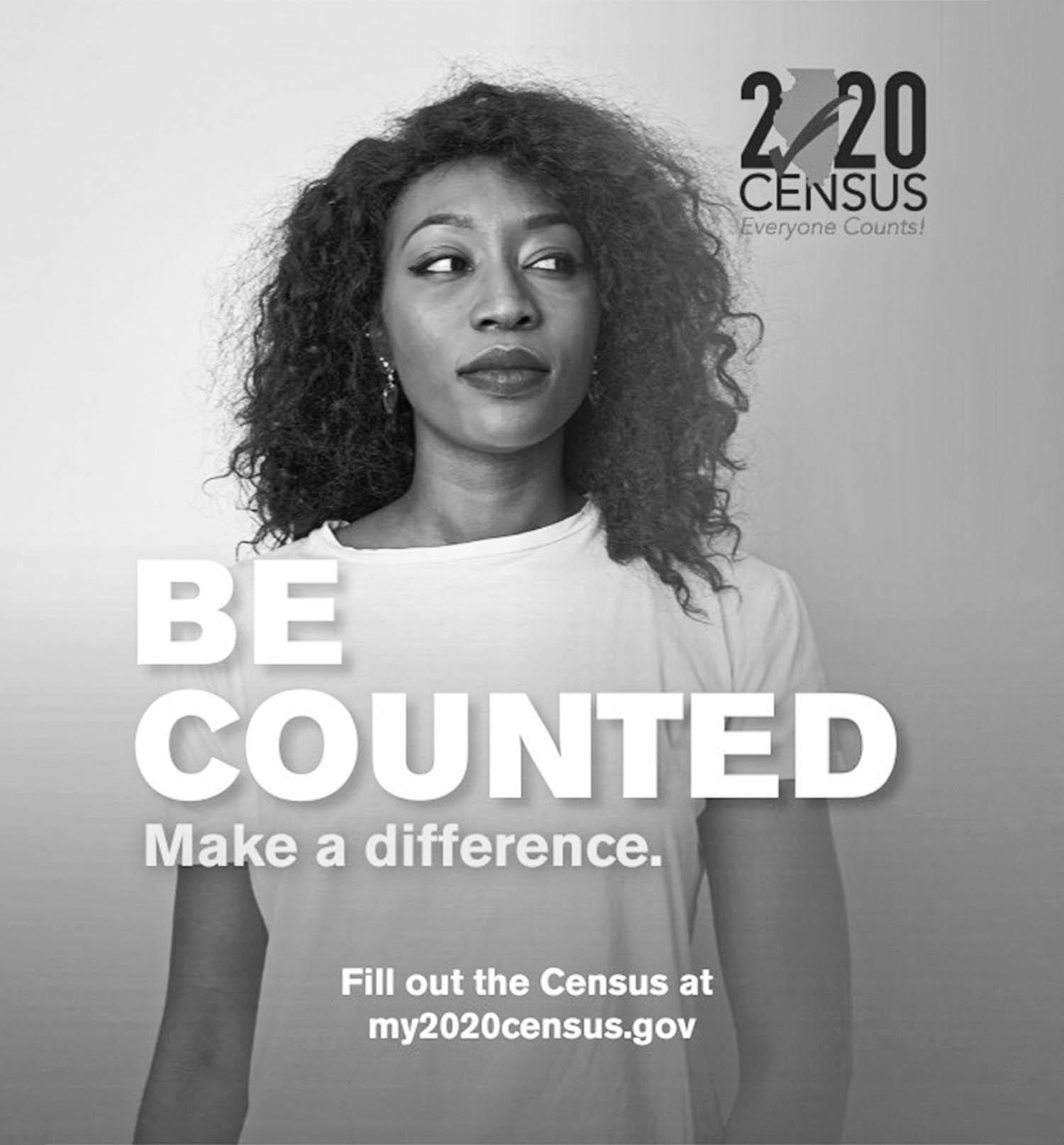
18 minute read
seeking clemency in a crisis
from May 13, 2020
Advocates argue that Illinois could be doing much more to protect the incarcerated from the pandemic, but many politicians fear backlash
BY GABE LEVINE-DRIZIN
Advertisement
Since the start of the COVID-19 pandemic, Illinois’ correctional facilities, like many across the country, have been devastated by the outbreak. While it has recently been superseded by two devastating outbreaks of more than 1,500 cases, each racking Ohio prisons, Illinois’ correctional facilities were for weeks home to two of the most prominent single-site outbreaks: one linked to the Cook County Jail (sitting at number six and, as of press time, responsible for 987 cases), and another linked to the Stateville Correctional Center near Joliet (sitting at number forty-three with 225 cases), where there have been at least eleven coronavirus related deaths.
In response to the outbreak, activists and lawmakers have demanded bold action to both relieve the suffering of those locked inside and to speed up the process of departure for those whose sentences are ending soon. It is nearly impossible to practice social distancing within a prison; there is often a lack of critical personal protective equipment, sick people are housed near others, and there is a high concentration of the medically vulnerable and elderly. Two weeks ago, a federal judge ordered the implementation of strict social distancing measures inside Cook County Jail, a move that has been pushed by many activists and covered extensively in the media. But the crisis in the state’s prison system, which houses more than 38,000 prisoners, has yet to be met with meaningful forms of relief.
Though it is a just, moral, and even legal obligation to prevent widespread death in prisons where no social distancing can occur, the necessity goes beyond that: prisons are incredibly porous places that are embedded in the communities that surround them. More than 8,600 correctional officers move back and forth between prisons and the wider community a day; this is to say nothing of the scores of other workers like medical workers and food vendors who do the same. If the severity of the outbreak within Illinois prisons is known and the need to address it is agreed upon, then what has gotten in the way of drastic action? A s early as March 12, activists called on Pritzker to release elderly prisoners from state prisons in anticipation of a wider outbreak. After the first registered death in an Illinois prison on March 30, activists turned to litigation to address the crisis. Three cases seeking to compel Governor J.B. Pritzker and the Illinois Department of Corrections (IDOC) to speed up the release of prisoners using mechanisms already available within state law were filed on April 2 by a consortium of local civil rights attorneys and advocates.
On April 13, a U.S. District Court judge, consolidating the two cases that had been filed in federal court, denied the request for emergency relief, essentially saying that there must be time given for IDOC to create a more effective response. Though the request for emergency relief was denied, these two cases have yet to be ruled upon and the ball is now in the court of the civil rights organizations to either amend their argument or to push forward, said Alan Mills, executive director of the Uptown People’s Law Center (UPLC), one of the organizations behind the suits. The Illinois Supreme Court declined to take up the third case.
According to Mills, even before the outbreak occurred, past litigation had compelled the Department of Corrections to address the insufficiency of its medical care. In 2013, the UPLC filed a lawsuit against the IDOC stating that more than 50,000 prisoners were experiencing needless pain due to the inadequacy of medical care in the state’s prisons. After a federal judge ruled in 2017 that the IDOC must systematically address these insufficiencies, a 2019 agreement imposed a court-approved monitor that would oversee a complete overhaul of how medical care is provided to the state’s prisoners. Though a team of federal monitors has pressed for compliance, the overhaul has been ongoing; if the outbreak is any indication, its implementation has been underwhelming.
Though a widespread release of prisoners has not occured at the speed that UPLC and its partners are arguing is necessary, Pritzker has taken some slight steps towards addressing the crisis. In late March, Pritzker signed an executive order which stopped the transfer of inmates from county jails to state prisons, something for which he was criticized by Cook County Sheriff Tom Dart, the Illinois Sheriffs’ Association, and later, the Sun-Times editorial board. He also signed an order which gives IDOC permission to allow “medically vulnerable” inmates out of prison temporarily for as long as the governor’s emergency proclamation is in effect. Inmates that meet medical criteria would be granted furloughs to slow the spread of COVID-19 in prisons.
The number of prisoners released on medical furlough is woefully insufficient, however, according to Jennifer Soble, executive director of the nonprofit Illinois Prison Project, which advocates for the state’s incarcerated population and provides representation to some of its members, and is one of the organizations behind the lawsuits. Soble and Mills put the number of prisoners granted medical furlough at around fifteen to twenty, a low number which may be a product of the IDOC’s very narrow definition of what constitutes “medically vulnerable.” And while Soble, a former federal public defender, noted that Pritzker has also taken a step to remove barriers to being released on discretionary good time by waiving a notification requirement, she said that up until now, these steps “have not resulted in any substantial number of increases or in any substantial increase in the pace of releases.” (Pritzker’s office and the IDOC did not respond to requests for comment.)
It doesn’t have to be this way, she noted. “It would be one thing if the IDOC didn’t have the legal tools that it needed to release people who were sick or old or to restructure “It would be one thing if the IDOC didn’t have the legal tools that it needed to restructure the prison population to allow for social distancing...That’s not the world we live in. The Illinois legislature has given the IDOC so many tools to react responsibly to this crisis.”
BY ILLINOIS PUBLIC RADIO
the prison population to allow for social distancing,” she said. “That’s not the world we live in. The Illinois legislature has given the IDOC so many tools to react responsibly to this crisis.”
Looking to help speed along the process, the Project, in conjunction with Restore Justice, which advocates for those who were incarcerated as youth, released a concrete list of actions that the governor and the IDOC could take today that would, in their words, “decrease demand on health systems and protect both inmates and communities.” The recommendations call on the governor to immediately grant pending commutation petitions that seek release based on terminal illness; encourage IDOC to release elderly people with less than a year to serve, and people serving some classes of felonies who are vulnerable to serious illness or death due to the virus; and, among other things, commute the sentences of anyone over the age of sixty with less than five years remaining to time served. I llinois governors have wide, unchecked clemency powers at their disposal— most famously exemplified by former Governor George Ryan, a Republican who in 2003, with merely forty-eight hours left in his term, commuted the death sentences of more than 160 inmates. While Illinois has a Prisoner Review Board which, among other tasks, makes recommendations as to whether or not certain prisoners should be granted clemency, Pritzker can both grant clemency without a hearing and ignore the advice of the board as he wishes.
Activists and attorneys have also implored Pritzker to use his powers of clemency, as pardons, commutations, amnesties, and reprieves are the most effective way of getting large numbers of people out of prisons as quickly as possible.
He has used these tools to a certain degree, commuting the sentences of seventeen prisoners since March 11. In some states in which governors are vested with the same clemency powers as Illinois, governors have used their clemency powers more widely to expedite the release of prisoners from crowded prisons. In Washington, Governor Jay Inslee has commuted the sentences of 293 prisoners set to be released within sixty days, and forty-one inmates have received work furloughs. In Oklahoma, Governor Kevin Stitt, a Republican, commuted the sentences of over 450 people. In Kentucky, Governor Andy Beshear has commuted the sentence of 186 inmates that were more susceptible to COVID-19, and released 743 more who had six months or less left on their sentence.
Commutations are not the only way to address the crisis. According to Courtney Oliva, executive director of the New York University School of Law Center on the Administration of Criminal Law, governors across the country have a wide array of powers that they can use to address the crisis. Oliva, a former federal and New York state prosecutor, is the coauthor of a recent report arguing for governors to stem the pandemic by using reprieves—a temporary suspension of a sentence that allows recipients to resume their sentences at a later date, and an underused tool that could help expedite the release of prisoners.
Though reprieves have historically only been used to save someone from a death sentence, according to Oliva, there is “no explicit restriction” on it being used to reduce correctional populations to limit COVID-19’s spread. Reprieves also have an added advantage: they “respond to this once-in-a lifetime pandemic and prevent people from getting sick” while taking into account “the political reality.” Oliva did note, however, that commutations are the “most fulsome and immediate way to get people out.”
Oliva’s report also highlights furloughs
as a useful release mechanism to deal with the crisis. A recent analysis by Injustice Watch found that 1,056 inmates—of which only forty-nine were older than sixty— were released through a combination of furloughs, electronic monitoring, and good time credit, all of which are used at IDOC’s discretion. Oliva was quick to praise the governor’s executive order granting IDOC permission to expand medical furloughs, noting especially that he didn’t “carve out those who committed violent crimes” from eligibility, something which often hampers other attempts at reform. But Jobi Cates, the executive director of Restore Justice, told Injustice Watch that the number is not nearly enough. “They could put thousands of people on home detention tomorrow,” said Soble. “There is nothing that is stopping them, except them.” P ritzker’s reluctance to use his clemency powers is not unique to Illinois— governors across the country have pardoned less and less frequently, and are often met with political backlash.
After learning about some of the governor’s commutations through the media, eight Illinois Senate Republicans and twenty-two House Republicans wrote letters to him asking, among other things, for clearer communication, an elaboration of the criteria upon which these prisoners are deemed releasable, and a clarification as to whether or not these commutations had anything to do with the virus itself. (Pritzker retains the sole authority on clemency, and has no legal responsibility to explain his decisions to legislators of either party, or anyone at all.)
Nevertheless, Springfield-area Republican Senator Steven McClure, who cosigned the letter, told me that he and his colleagues “were not saying that all commutations were bad.” In fact, he echoed Soble in some regards, saying, “The way that this has been handled by DOC is not very good.”
Though Illinois Republicans have singled out the governor’s lack of “transparency,” it is clear that the majority of the backlash has stemmed from the nature of the commutations—namely, that some involve those convicted of violent crimes. The case of Alma Durr, a south suburban woman who in 1999 was convicted of killing her twenty-one-month-old son after using crack cocaine, has been the focus of Republican ire. The letter specifically mentions this case and notes in detail how her son Darryl “moaned and suffered but did not die for another two hours.” The letter also noted that Durr, who had been sentenced to life, was leaving a prison that, according to the IDOC website, at the time had no COVID-19 infections.
“You have to draw the line when you have child murderers,” said McClure, who served as a prosecutor in Sangamon County before taking office last year.
According to an interview with Rockford-area Representative John Cabello, who signed the House letter, Pritzker said at first that he would commute only those who were elderly and susceptible to COVID-19. Cabello has released data from a list of 761 released inmates he obtained from Kankakee County Sheriff Mike Downey that he claims counters the governor’s promise, noting that he had found “at least three” murderers that didn’t fit that criteria in the list. Though the accuracy of the list of 761 inmates itself was confirmed by IDOC, its spokesperson said it included many who had been released for reasons unrelated to the pandemic. Downey claimed to The Center Square, a news website founded last year with ties to right-wing groups, that he found the list on the IDOC website. Neither Center Square nor the Weekly could locate the list on the IDOC website.
Cabello, who served over twenty years as a police officer and still works as a parttime detective for the Rockford Police Department when the legislature is not in session, said that he was open to working with Pritzker to release low-level nonviolent offenders but that he should “stop releasing murderers” and those that had been convicted of other violent offenses.
Cabello also told the Weekly that he wrote a letter to the governor and filed a public records request to find out whether those released had been so due to the coronavirus or not. He said that the governor has not responded and that his request was denied.
In the days after he spoke to the Weekly, House Republicans got an answer in the form of a letter written by IDOC Acting Director Rob Jeffreys addressed to Jim Durkin, leader of the state House Republicans. The letter explained, among other things, that the IDOC “has not changed policies” in determining which offenders are appropriate for release and that the list of all those released was already available publically online.
As far as the more high-profile seventeen commutations that the governor has granted, the charge that they were done “quietly,” as described by the Tribune, is not correct. In the case of these commutations, according to Jason Sweat, the chief legal counsel for the Illinois Prisoner Review Board, normal procedure as far as notifying victims and families was followed. Pritzker spokesperson Jordan Abudayyeh did not respond to Weekly requests for comment, but told the Capitol Fax blog, “There is a clear process that has been used for decades when governors exercise their clemency powers.… The Governor is a strong believer in criminal justice reform and that means carefully and thoughtfully considering petitions for clemency from those who have demonstrated a commitment to rehabilitation while serving their sentence. The Governor takes the PRB’s recommendations to heart as he weighs these decisions.” In addition, many of these commutations, like the case of Marilyn Mulero, were granted to inmates whose clemency hearings had been attended publically and were extensively covered in the media.
By not commenting specifically on whether these commutations are related to COVID-19, however, the governor has opened a window of uncertainty which Republican lawmakers have been able to exploit. While other states’ governors have explicitly linked recent commutations to the COVID outbreak, Pritzker has not responded to questions as to whether recent commutations were COVID related.
According to Soble, the clemency system is an area in need of reform: “we are seeing the byproduct of a system that wasn’t working very efficiently before COVID and the governor is playing catch-up.” She highlighted how many of the commutations granted “should have occurred under any circumstance.”
The sparse and halting use of the governor’s clemency powers, and the widespread criticism of its use, even during a global pandemic, exposes how the ideologies justifying mass incarceration put incarcerated people at disproportionate amounts of risk during crises. As the outbreak of COVID-19 has forced politicians to consider more radical solutions to address underlying issues in the economy and healthcare system, a more robust use of clemency powers during a pandemic could forge a new precedent for prison and criminal justice reform after the outbreak. I n 1978, as part of a larger nationwide movement towards tough-on-crime solutions, Illinois abolished discretionary parole for those sentenced after February 1 of the same year, replacing the system with mandatory supervised release (MSR). While MSR is a parole-like system of supervision that applies to those convicted of certain offenses, it comes into effect only after the full completion of a sentence—functioning as an additional penalty for serious crimes, never as a way to release prisoners early in order to encourage rehabilitation. The abolition of discretionary parole is a factor in explaining the subsequent skyrocketing of Illinois’ prison population.
Pritzker and IDOC’s ability to release large amounts of the prison population early in a safe way in the absence of any widespread discretionary parole system has severely hampered his ability to navigate the crisis. Illinois is one of sixteen states, plus Washington, D.C., that does not have any way for incarcerated people to earn parole. Illinois does retain discretionary parole for those sentenced before February 1st, 1978, and a bill that Pritzker signed into law in April 2019 now allows for inmates who committed certain crimes before they were twenty-one to also petition the Prisoner Review Board for parole after serving ten years. However, the roughly 120 elderly prisoners that qualify for discretionary parole are by no means guaranteed the majority vote of the Prisoner Review Board that they need in order to gain parole, and the fifteen-member board votes against granting parole in the vast majority of cases. Ultimately, that means that in Illinois, according to Soble, “there is no established system for people who pose no threat to public safety whatsoever to go home before the expiration of their sentence—no matter how long that sentence is.”
Other states have taken advantage of their discretionary parole systems to more effectively handle the outbreak in their prisons.
In Michigan, for example, the number of people being paroled from state prisons has increased by around 1,000 per month, according to the Prison Policy Initiative, a national research and advocacy nonprofit.
Some states that don’t have discretionary parole systems, however, have still been more effective in dealing with the COVID outbreak in prisons. On March 31, California Governor Gavin Newsom approved the early release of up to 3,500 inmates to slow the spread of the virus
by accelerating the release dates for nonviolent offenders due to be released within sixty days. In Washington, more than 1,150 inmates are set to be released as a result of an order from the state Supreme Court.
McClure agreed that the way the criminal justice system is structured has also made it hard to adequately respond to the pandemic: “The options shouldn’t be a. you live in a place that is unsafe because of the widespread infection rates here, or b. you go home and you’re free. Those should not be the two options.”
Prior to the outbreak, several Democratic lawmakers put forth legislation that would seek to expand parole in some way, be it to those who have terminal illness, as Northwest Side state Representative Will Guzzardi proposed in January, or to those who have served a certain percentage of their sentence, as state Senators Celina Villanueva, from the Southwest Side, and Kimberly Lightford, from the west suburbs, have proposed in separate bills.
While past attempts have failed, Soble, who worked on crafting Guzzardi’s bill, is “optimistic that it will pass at some point.”
In an interview, Villanueva recognized that it could be years until the legislation passes; her and Guzzardi’s bills both have just one cosponsor each—Senator Robert Peters and Representative Kam Buckner, respectively—and Lightford’s has none. Pointing to how ten years ago “cannabis legalization was unfathomable,” she emphasized that big shifts in public consciousness can happen.
And to Villanueva, it’s not only about what we do now to address the pandemic, it’s also about what we do after the virus has run its course. Parole is a necessary fix, according to Villanueva, because after the outbreak, many more people will be in desperate situations, impoverished, and suffer from worse mental health outcomes.
“Times of desperation lead to desperate choices and criminalizing everybody will not be the answer,” she said. ¬
Disclosure: the author’s father sits on the board of the Illinois Prison Project. He had no role in the reporting of this story.






Gabe Levine-Drizin is a contributor to the Weekly. He last covered the unsuccessful efforts of three challengers to oust U.S. Representative Bobby Rush from his long-held seat.
Your parcipaon matters.






